Adventures Of A Young Red-tail Hawk
The Lessons Of Bullying Squirrels, Pestering Blackbirds and An Old Oak on “Hawk Hill”
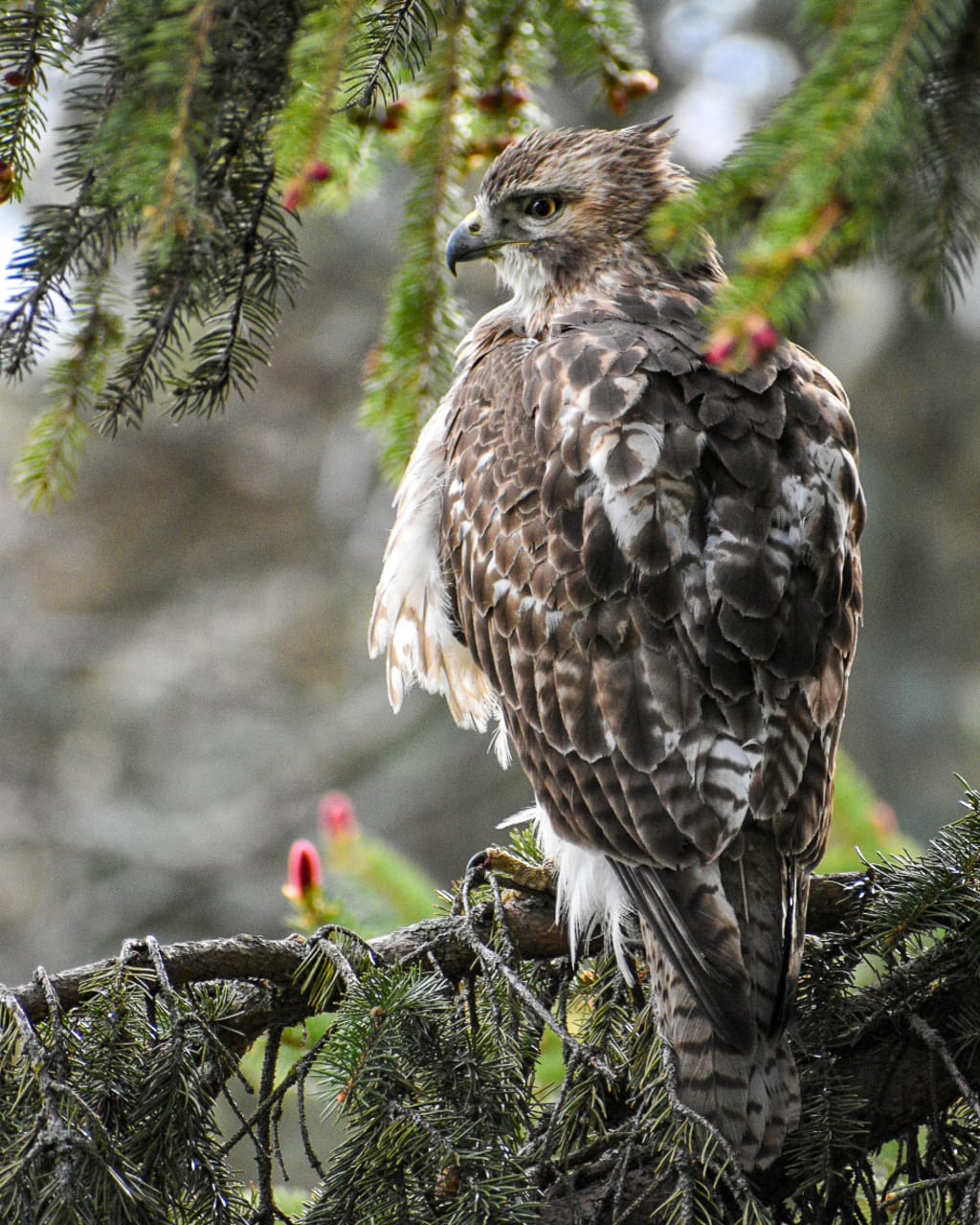
A Red-tailed Hawk enjoying a serene moment; or so it would seem. Actually, this Hawk had just had “one of those days.”
A Hawk has to eat. It’s an efficient hunter and it has its role in keeping rodent populations in check. But it’s funny and satisfying sometimes when the prey, in this case a cheeky grey squirrel, runs circles around its pursuer.
The Hawk was crouched on a nearby branch, tracking the squirrels in the next tree with quick movements of its head and neck. The squirrels were noisily aware of its presence, chattering to one another in warning. One big grey squirrel sat out on a branch at eye-level across from the Hawk and plainly taunted it; barking and growling with a low-pitched chrrrrrrrrrr!
The hawk waited, leaned forward, then swooped in, crossing the gap between them in an instant. This sent the squirrel diving from its branch to scramble up the opposite side of the trunk and the chase was on. The squirrel had the advantage in climbing and continued to hurl insults while it played keep away, easily avoiding the hawk which, unable to use its great wings to manoeuvre, now seemed awkward and off-balance hopping upward from one branch to another. The hawk stretched its neck to see around the tree, looking for an opportunity to strike, while the squirrel ran circles around the trunk, scolding and shrieking.
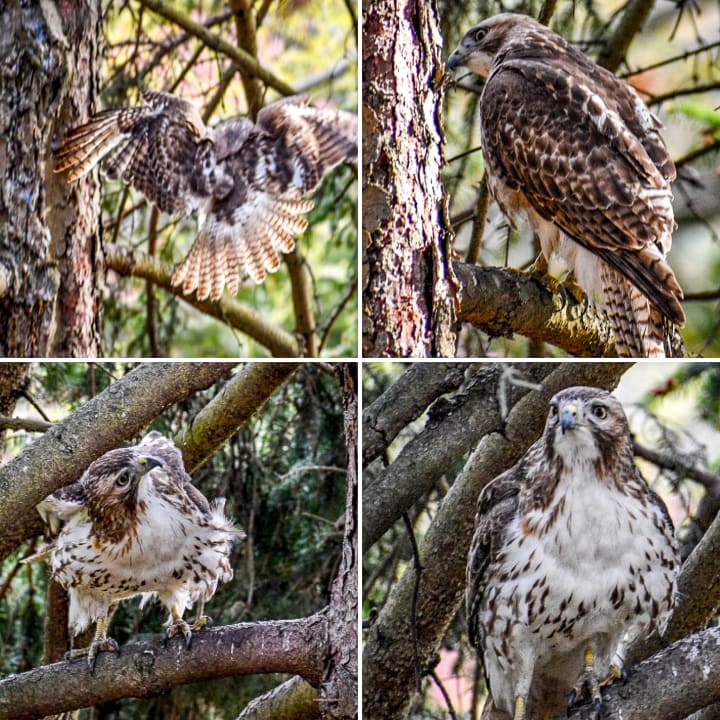
Finally, the hawk gave up. The branches were grown too close together to fly between and there was no way it could keep up with the leaping, jittery squirrel. It stretched its wings to glide away to a new hide, and the squirrels settled down. The Hawk was in mid-flight when two grackles winged by and began harassing it, taking turns diving at its head until the hawk flew off out of the area.

Another day and our young Red-tail Hawk has recovered his confidence and found a new perch in the golden sun of evening, far from the bullying of over-sized squirrels and the pestering of blackbirds.
He has taken command of an old oak stump, which stands on the highest ground in High Park. This high point of the parks topography, aptly named “Hawk Hill” by ornithologists who do a raptor migration count here each fall, is a way-point for several species of hawks and owls before their long flight south across Lake Ontario.
There is meadow surrounding his perch that provides the hawk with a good supply of voles; two scurried past me through their grassy tunnels as I climbed the mound that is “Hawk Hill”.
It was an impressive sight to see the young hawk here at sunset, although he was so well-blended into the stump he was unnoticed by most passers-by, and I wondered if he would be able to hold the hill all summer.
The old oak trunk, although dead, is still standing after several lightening strikes and wind storms; it’s roots run deep and many older, bigger birds will remember it. Upon his new perch our young hawk is bound to encounter rivals.
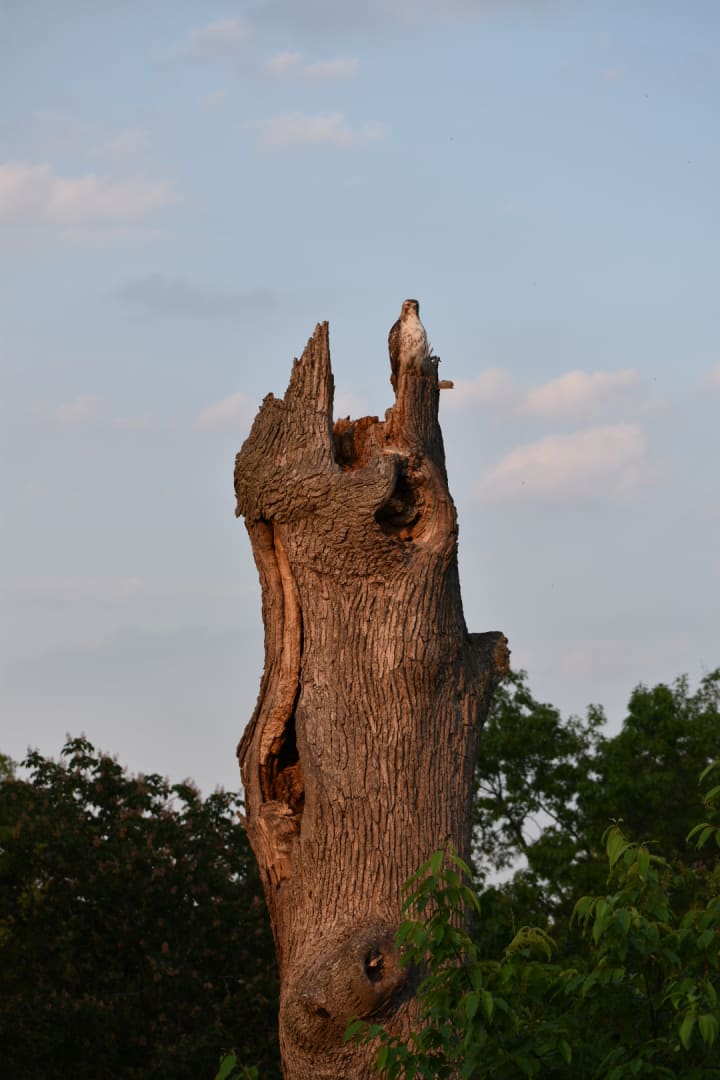
I have been pleased to see this hawk through many stages of its development. I have seen it hunting chipmunks, swooping down with its talons outstretched, only to be distracted by a dead oak leaf suddenly animated by a gust of wind that sent it scraping down a garden path looking like a frightened rodent bolting for cover. The young hawk had checked its dive only to sink its talons into the fugitive leaf. Having demonstrated its intentions and sent every nearby chipmunk now diving for their holes, the hawk retreated to a nearby low bough to sulk.
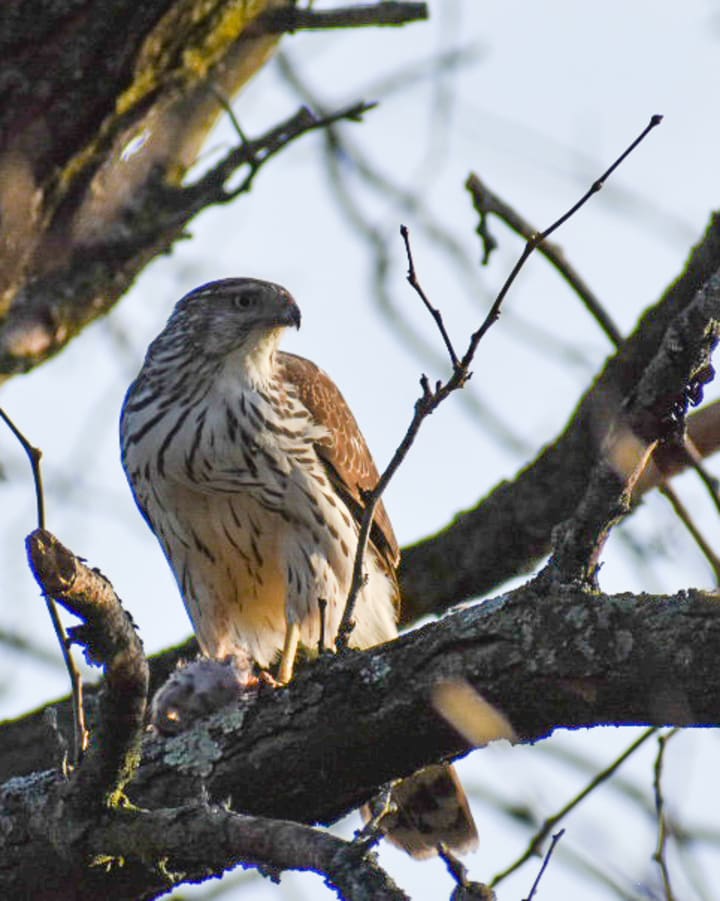
The young hawk has not always been this unlucky in its pursuit of a meal; he has had successes or he would have not survived. I have seen him in the trees squatting over many meals of one kind or another, as shown above. I feel sorry for the chipmunks and voles that he catches because I love to see them on my walks and recognize the bright life and intelligence in their eyes, and dare I say, the emotions felt by all living things.
It’s a strange aspect of nature that the bigger creatures live off the smaller in a pyramid with man at the top. But it is the natural order of life, and it works until man changes and industrializes it. Our powerful brains always seem to disturb the natural order, not to work with or be part of it.
About the Creator
Andrew Turnbull
I take out my camera, screw on the telephoto lens, and start walking.
Letting go of thoughts or worries, I silently ask, “What is beautiful and interesting today?”
The answer to that question is what I photograph and write about here.


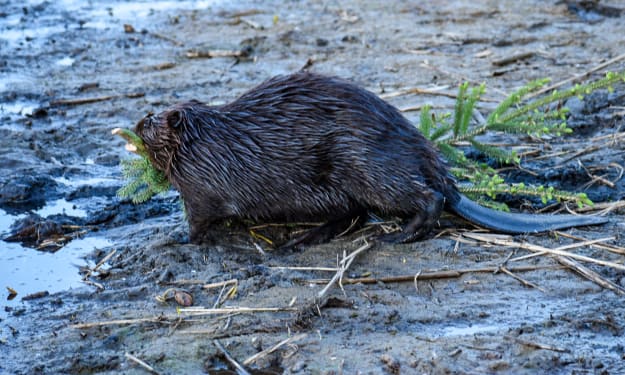



Comments
There are no comments for this story
Be the first to respond and start the conversation.